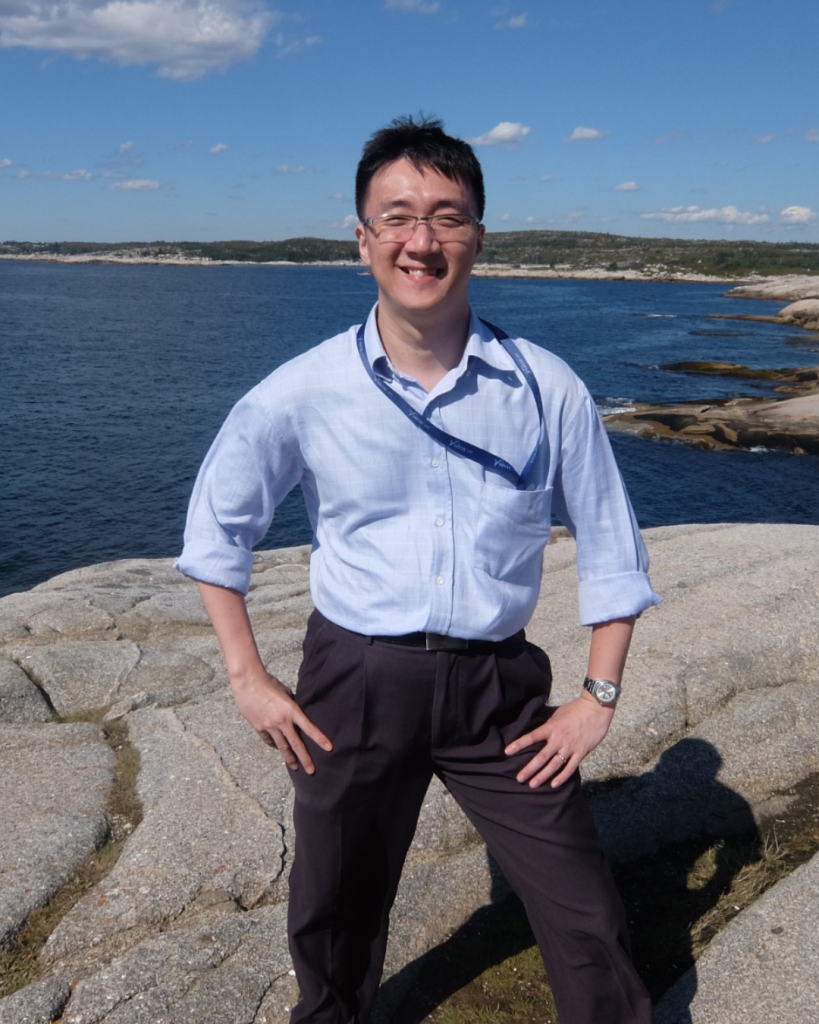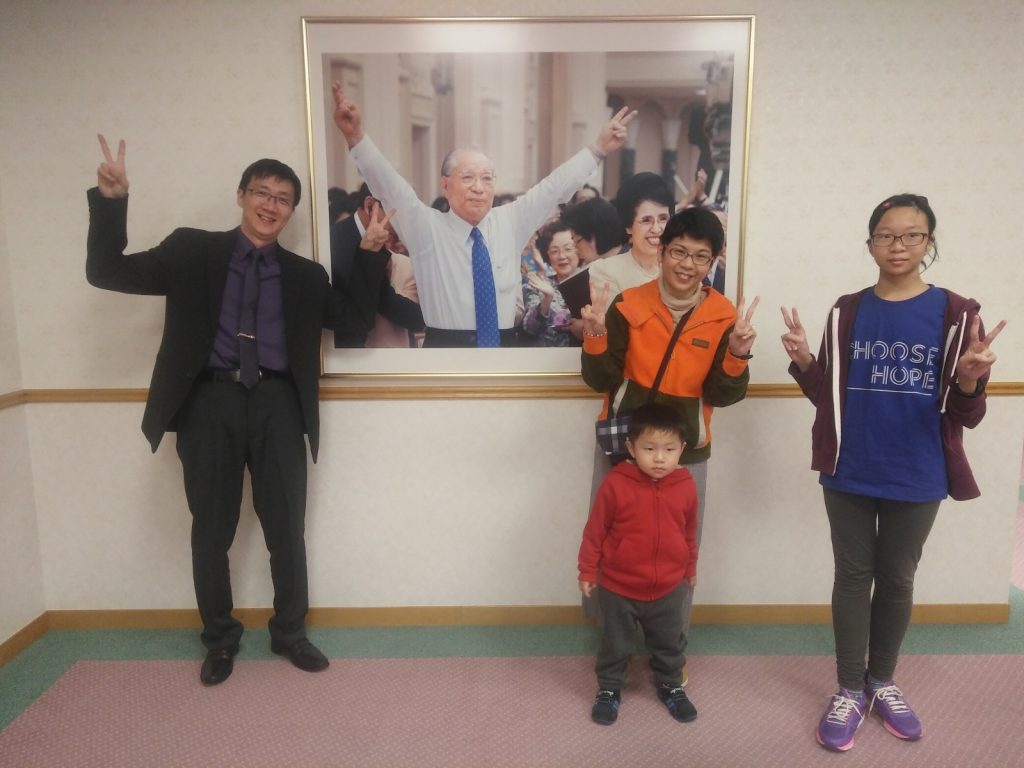
Ng Chor Boon
Men Division
I was introduced to Nichiren Buddhism in 1996 during my final year at university, when I was going through a very difficult period. My friend was diagnosed with a brain disease and eventually passed away amid my preparation for the final examination. My sisters encouraged me to chant the daimoku of Nam-myoho-renge-kyo to overcome my sorrow and the warm encouragement from numerous Soka Gakkai members and leaders helped me to continue with the Buddhist practice.
My eldest sister told me that Ikeda Sensei donated many books to the National University of Singapore’s library so I went there and found the book Life — An Enigma, A Precious Jewel. In the topic “Life and Death”, Sensei quoted the Gosho passage, “Therefore I should first of all learn about death, and then about other things.” (WND-2, p. 759) How true that is! Understanding the meaning of my friend’s death gave me a totally new perspective of my life then — life is the most valuable thing and we should treasure it, using it to create value that benefits oneself and others; and we can lead a happy life regardless of the external circumstances, even in the face of death. I found the philosophy of life explained in Nichiren Buddhism so profound, yet realistic and practical. I felt a natural affiliation to it, and this became the prime point of my faith. Despite the anguish I suffered, I managed to obtain a degree with First Class honours. I attributed this achievement to the chanting of Nam- myoho-renge-kyo. After graduation, I continued to practise and study Nichiren Buddhism. I remember sharing at a Young Men Division (YMD) meeting, “In the future, I want to be a leader who is able to remove suffering from the people, just like what the leaders had done for me.”
Facing the Challenges at Work
Soon after, I started my career as an engineer in the public service and have been with the organisation till today. Along the way, I wondered many times if I should quit. The work schedule was punishing with tight deadlines. I felt that I was “fighting fire” and suffering at work. As a newbie, I saw my seniors working hard and late almost every day. Thus, clocking out punctually was not an option for me.
Furthermore, I was often sandwiched between bosses who could not see eye to eye. Despite gritting my teeth and pushing on, I was criticised for working below par. At first, I was on a scholarship and could not resign. I started work every day with a heavy heart, and ended each day frustrated and devastated. I could not attend Soka Gakkai activities as freely as I wished, and hardly chanted. I felt utterly pathetic.
Then an opportunity arose. I applied to study a two-year full-time master’s programme in engineering, thinking this would relieve me of the suffering at work. However, the classes were either in the early mornings or in the evenings and rushing out assignments meant I had to sometimes stay overnight on campus. Moreover, this was the first intake and expectations were very high. The stress level was not anything lower than at the workplace! I was living a totally joyless life, in fact more of a nightmare!
Taking the Lead By Removing My Own Suffering
However, this period also became the turning point of my faith. I was a YMD district leader then and was tasked to act the role of Toda Sensei (second Soka Gakkai president) in a skit depicting the historic events of March 16.
I was also tasked to write the script for the 15-minute skit in Chinese, barely a month before the event. When that challenge was presented to me, I hesitated. I told my leader about my concerns with my studies. He responded simply, “Accept first, challenge later, chant more.” I did exactly what he told me.
Then, I had a major assignment deadline just before the skit! I thought to myself, “That’s it! I’m going to do badly this time.” Nonetheless, I used whatever time I had besides studies and assignments to prepare the script. This opened my mind notably to the struggles of Toda Sensei and Ikeda Sensei. I read about “Toda University”, how Ikeda Sensei supported Toda Sensei to achieve the unprecedented 750,000 household membership, and why March 16 is such a significant date for youth. I wanted to portray Toda Sensei’s spirit the best I could. I pondered, “What would Toda Sensei’s tone or voice be when he said this or that?” The intensity of immersing myself into the role of acting Toda Sensei’s character made me recall the words I had shared at the YMD meeting – to be a leader who is able to remove suffering from the people. I reflected on my own attitude at work, in my studies, and as a YMD leader. How can I be someone who removes suffering if I cannot remove my own suffering?
Convinced that I needed to overcome my own limitations, I realised that my suffering originated from me, not my environment. Soka Gakkai founding president Tsunesaburo Makiguchi wrote, “Depending on one’s state of mind, even hell can be enjoyable.” (The Wisdom for Creating Happiness and Peace 4.7) I squeezed time to chant sincerely for wisdom and high life condition to refine the script, rehearse the skit, and complete the assignment. In the end the skit was a resounding success, and I also got an “A” grade for the assignment. Through this experience I gained insights into the mentor and disciple relationship. I felt revitalised after this event, and with a new sense of resolve I plunged into Soka Gakkai activities to train myself. Eventually, I graduated from the master’s programme with distinction.
Gladly Stepping Forward to Take on Every Struggle for Kosen-rufu
I braced myself to go back to work after graduation. While resolved to face the challenges, there were difficult moments, too. Every day was a struggle with constant demands and new challenges. But this time, I told myself, “Even if I want to leave, I must first achieve some success and victory at work.” With encouragement from comrades of faith, Ikeda Sensei’s guidance and persistent chanting, I kept myself firmly on course, regarding my work as part of my Buddhist practice and the struggle for kosen-rufu.
I took on more roles and responsibilities in Gakkai and at the workplace. I realised that prayers to the Gohonzon are the key to having wisdom to manage issues at work, and good fortune to attract protective functions during work crisis. In 2013, I became the first, and still the only one till today in my department, to achieve the highest technical proficiency level in my field. I also actualise the humanistic philosophy of Nichiren Buddhism in my workplace by respecting my staff and having one-on-one, heart-to-heart dialogue whenever the opportunity arises.

Over the years, I still faced dark moments at work, especially during the recent Covid-19 period. But, with a deep sense of gratitude for my Buddhist practice and towards my mentor Ikeda Sensei, all darkness was illuminated with the light of hope.
All these years of struggle show that I am just an ordinary man with strengths, weaknesses, problems and challenges, but I am able to create victories with the practice of Nichiren Buddhism, just as Nichiren Daishonin states in the Gosho, “A blue fly, if it clings to the tail of a thoroughbred horse, can travel ten thousand miles, and the green ivy that twines around the tall pine can grow to a thousand feet.” (WND-1, p. 17)
My favourite Sensei’s guidance reads,
I wish to impart the following to young leaders. There is something that I always bore in mind while supporting my mentor, second Soka Gakkai president Josei Toda. It is the spirit of gladly stepping forward to take on every struggle for kosen-rufu. I never shrank back and said, “I can’t do it.” Neither did I arrogantly act as if I was doing someone a favour. I always followed the path of willingly taking action. (On Our Shared Journey for Kosen-rufu II )
“Gladly stepping forward to take on every struggle for kosen-rufu” is the spirit of not begrudging one’s life and I take this as my personal resolve as a worthy disciple of Sensei, to do my best for kosen-rufu.
(Adapted from Aug 2022 issue of Creative Life)
